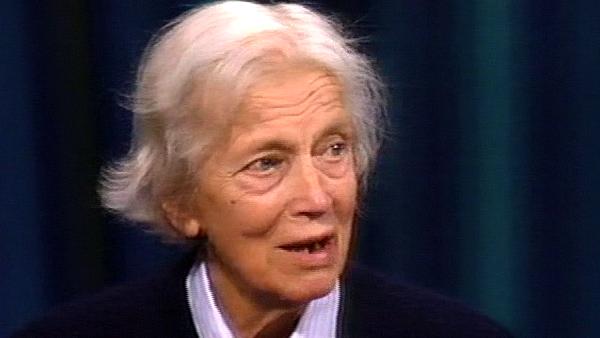NEXT STORY

The structure of insulin
RELATED STORIES

NEXT STORY

The structure of insulin
RELATED STORIES



|
Views | Duration | |
|---|---|---|---|
| 31. Meeting Lester Smith | 212 | 01:20 | |
| 32. Working on vitamin B12 | 1 | 247 | 03:09 |
| 33. Mapping the chemical structure of B12 | 167 | 00:53 | |
| 34. Calculating three-dimensional electron density maps | 103 | 07:36 | |
| 35. Complex chemistry | 94 | 04:43 | |
| 36. The phase problem | 217 | 02:12 | |
| 37. Insulin and heavy atoms | 1 | 108 | 01:46 |
| 38. The Bijvoet effect | 91 | 01:50 | |
| 39. The structure of insulin | 678 | 04:28 | |
| 40. Synthesising insulin | 165 | 03:13 |


One of the things that was important was the Bijvoet effect.
[Q] Yes, yes. But you picked up on the B12 of course?
The last B12 compound that we did was this... I always regard it... particularly marvellous is the fact of 51a.
[Q] The 51a.
This is the fact that it was discovered quite late in time. Kind of all these operations that from sewage sludge was a compound which had the same kind of order of magnitude as the red fragment, that's to say, in no benzonate sugar phosphate group that just the corrin nucleus and its side chains and end groups... and this gave very nice crystals which showed very prominently the Bijvoet effect, that's to say the... they gave different intensities from the positive reflections from the negative reflections and from that, these very small differences, you could determine the phase angles. And this operation was carried out by Vanketesan, one of the Indians from Bangalore who'd learnt it from Ramaseshan who was an even better Indian from Bangalore.
British pioneer of X-ray crystallography, Dorothy Hodgkin (1910-1994), is best known for her ground-breaking discovery of the structures of penicillin, insulin and vitamin B12. At age 18, she started studying chemistry at Somerville College, Oxford, then one of the University of Oxford colleges for women only. She also studied at the University of Cambridge under John Desmond Bernal, where she became aware of the potential of X-ray crystallography to determine the structure of proteins. Together with Sydney Brenner, Jack Dunitz, Leslie Orgel, and Beryl Oughton, she was one of the first people in April 1953 to see the model of the structure of DNA, constructed by Francis Crick and James Watson. She was awarded the 1964 Nobel Prize in Chemistry and is also known for her peace work with organisations such as Science for Peace and the Medical Aid Committee for Vietnam. All recorded material copyright of The Biochemical Society.
Title: The Bijvoet effect
Listeners: Guy Dodson
Guy Dodson studied chemistry and physical science at the University of New Zealand, followed by a PhD on the crystallographic study of an alkaloid. In 1961, he came to Oxford to work on the crystal structure of insulin. In the mid 1970s Guy and his wife moved to York University to establish a laboratory. In addition to insulin studies the laboratory has investigated many complex molecules of medical significance, including haemoglobin, myoglobin, HIV related proteins, proteases and proteins involved in managing nucleic acids in cells. In 1993, he went to the NIMR in London to establish a crystallographic group in an environment that spanned molecular, physiological and disease-related disciplines. Here his research began on some cell signalling proteins. His interests on medically relevant proteins included prions, malarial and TB proteins, and some clinically relevant thrombin inhibitors. Guy Dodson retired in 2004 but is still finding much to do in York and the NIMR.
Tags: Bijvoet effect
Duration: 1 minute, 50 seconds
Date story recorded: 1990
Date story went live: 02 June 2008